How can you manage 83% layers in alternative production systems? Take a look behind the scenes of the Danish egg production sector, together with the commercial hatchery LOHMANN Denmark and their Managing Director & Technical Advisor Mr Christian N. Nielsen.“If you are planning to write a book or start producing a new product, you typically need two things before you start : 1) a goal 2) a plan to get where you want to … we also need these things with our alternative egg production system.”

Denmark has a population of 5.7 million inhabitants. Each person eats on average 246 eggs (incl. egg product) a year. Imports of eggs are low, but exports are a growing market. The total number of laying hens in Denmark for table egg production is about 3.7 million – with a share of about 80% of white birds and 20% of brown birds (LSL LITE and LB LITE).
Of the 3.7 million hens in production, 15% are from enriched cages, 40% from barn systems, 10% from free-range production and 35% are housed in organic systems. These birds are kept at about 110 farms in total.
Egg producers in Denmark are paid per egg, with the highest prices for medium and large, slightly lower prices for extra-large and the lowest price for small eggs. Typical flock size in Denmark for barn and organic production is around 20.000–30.000 hens.
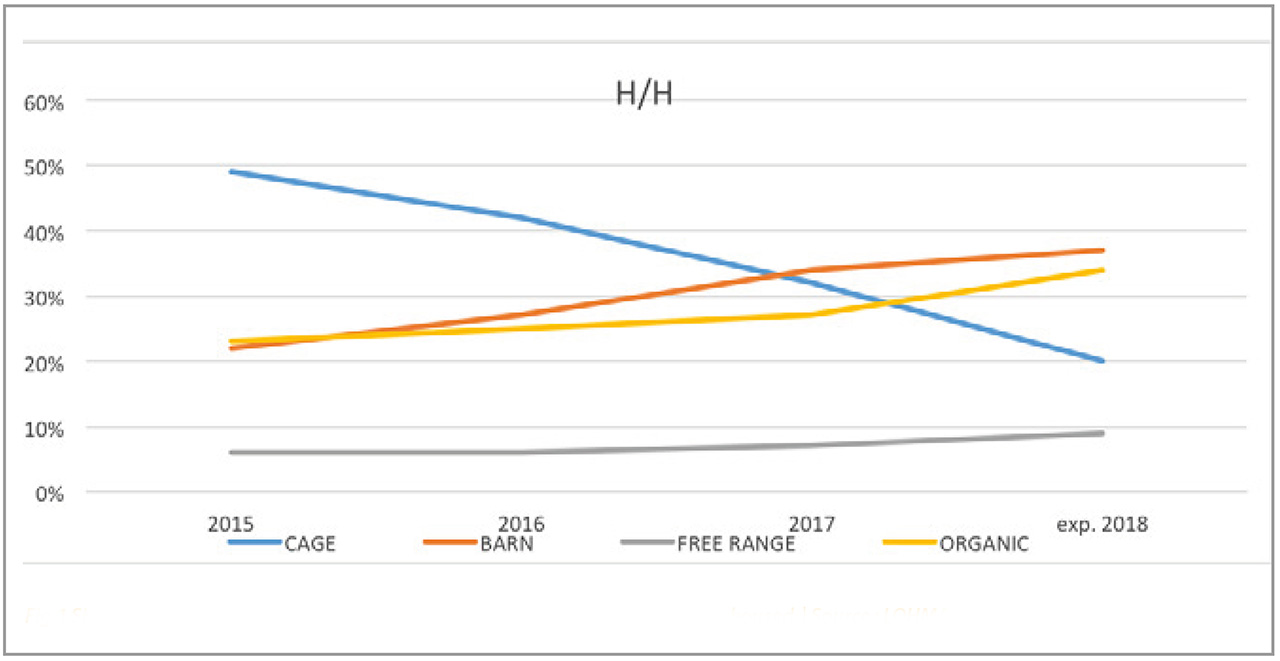
Fig.1 Share of laying hens in Denmark from 2015 until 2018 – percentage of hens housed. | Source: LOHMANN Denmark ApS
Our goal in Denmark is similar to that in most other countries: we want full feathered birds until the end of production, the highest number of saleable shell eggs in medium/large (89-91%) and low mortality. But how do we achieve this?
In the last five years, alternative egg production has grown tremendously in Denmark. I would like to share the key tools we have learned to use to achieve success in this production system. Different tools might be used in organic, free range and barn egg production.
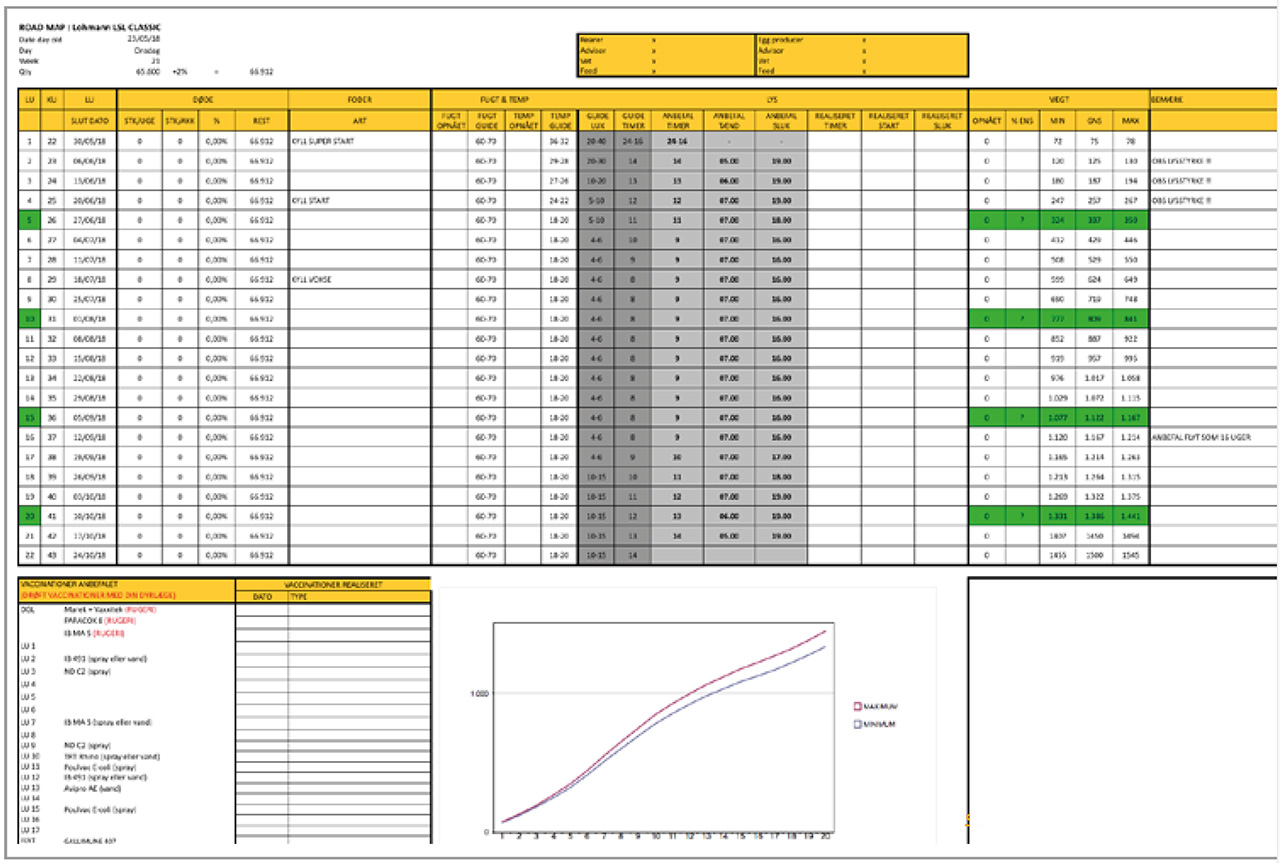
Source: LOHMANN Denmark ApS
You need a plan!
Rearing is a key factor for your profitability during egg production, so a plan for this period is required. What time of year do your layers go into production? Do you want eggs at an early or late age? Do you want large or small eggs? What is the feed strategy during rearing? What is your vaccination schedule? We have achieved huge success by planning all these factors before the chick is a day old.
We call this “a customised road map”, and it should fit onto a single A4 sheet of paper. The hatchery is the main driver of this plan which is drawn up in cooperation with the rearer, egg producer, feed mill and veterinarian.
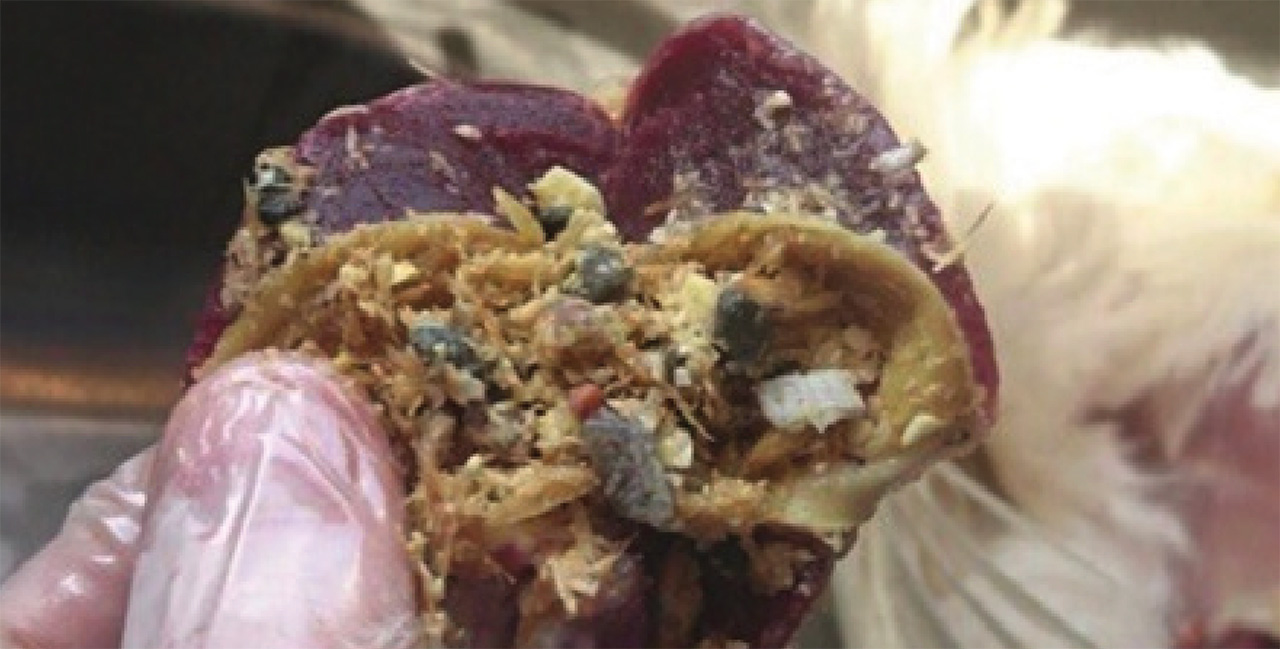
Source: LOHMANN Denmark ApS
Once the plan has been established, it is vital to follow the details of the plan. The approach may also need to be adapted if rearing has not proceeded as planned. The factors to achieve success and the tools we use are listed below:
– Top quality day-old chicks are essential for a good start. Average 1st week mortality below 1% is preferable.
– Bodyweight and uniformity at 5 and 10 weeks must be in line with the standard or above (skeletal and brain development), since it is impossible to make up for any deficiencies later (the bird is primary gaining fat during weeks 12-17).
– Adapt the lighting intensity as a preventive measure, especially from week 3-4 onwards.
– Inspect feather cover daily. Hold the birds in your hands. Sit down for five minutes and watch your flock’s behaviour and listen to the sounds they produce.
– During long summer days, rearing which takes place outdoors must follow a daily light routine. That means, for example, stimulating the flock to become active at midday (12.00 hrs) and to sleep in the evening at 22.00 hrs (10 hours of activity). It is important to ensure the house is daylightproof, so the flock sleeps until midday.
– During the rearing period, the gizzard and intestines develop. It is important to provide your birds with coarse feed; coarse oats are a highly valuable source of structure. Furthermore, we normally provide lucerne (alfalfa). This helps develop their digestive system function, but also encourages the birds to peck at the lucerne as a distraction. We also provide the birds with 2 grams of small stones (2.00-3.55 mm) for the gizzard every two weeks from oneday old until the end of production. This grit acts like a grinding stone in the gizzard. Organic and free range birds typically source this grit in their outdoor rearing area as natural gizzard stones. The image below shows an autopsy of a 30-week old organic LSL. Approx. 30% of the gizzard was filled with natural gizzard stones.
– Feed intake at the end of rearing should be at least approx. 70 g per day at age of 16 to 17 weeks. We consider feed intake of 60 g as too low. A high stocking density or high temperatures can cause a low feed intake. Not providing the flock with coarse feed, roughage or similar, can cause insufficient feed intake.
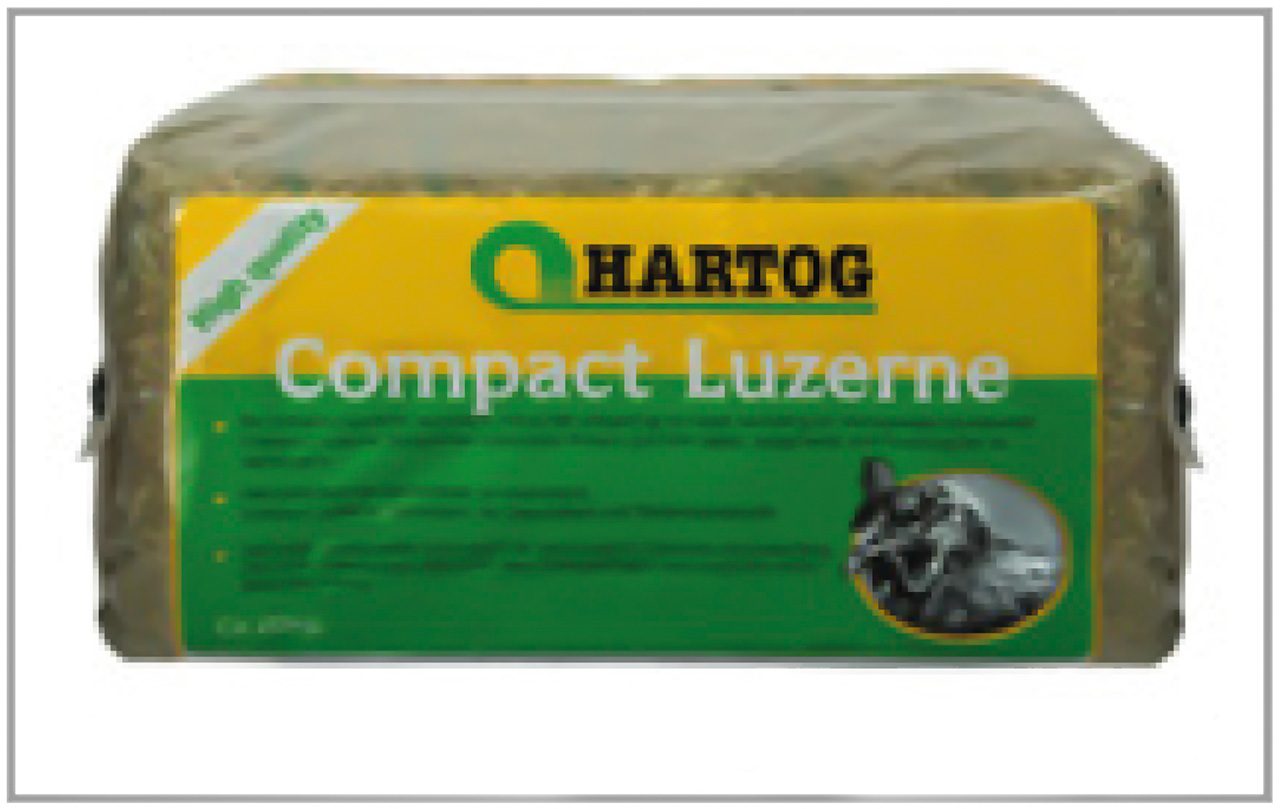
Source: http://www.hartog-lucerne.com/en/
Too low feed intake at the end of rearing often results in a too low feed intake at the start of production. Therefore, this is one of our key focus areas.
We tend to see a much better feed intake in organic production at transfer.
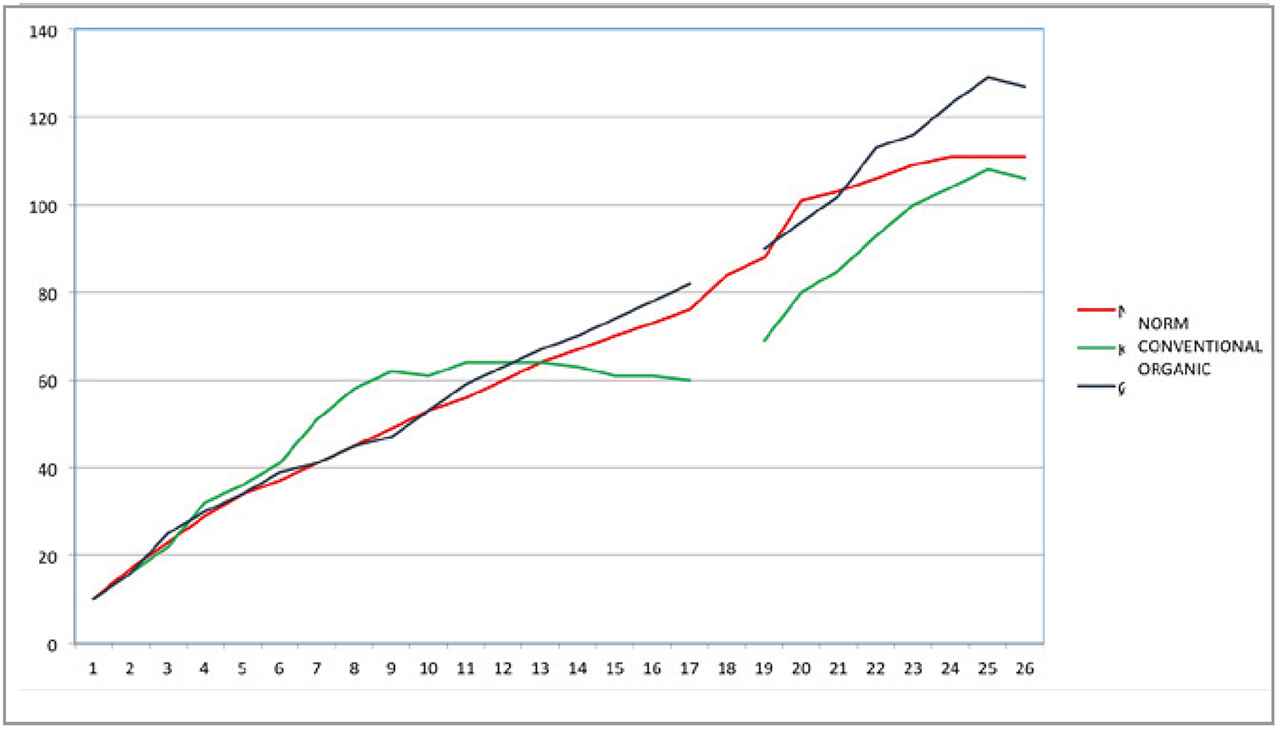
Source: LOHMANN Denmark ApS
What have we learned during the production period?
Our most successful production is organic production. Free range and barn egg production could learn from this production strategy. So what is behind the success of organically reared flocks? The birds also have outdoor access during rearing.
On average, maybe 75% of the birds venture outside the house, so the stocking density indoors is lower. The birds can exhibit their natural behaviour outdoors. Take 10 minutes to sit and observe their behaviour outdoors – it is amazing to see how active they are. Continuously searching and scratching – they are always on “a voyage of discovery”. Outdoors they can also eat grass, worms, stones, etc. If they are unable to go outdoors, how can we provide the same opportunities indoors?
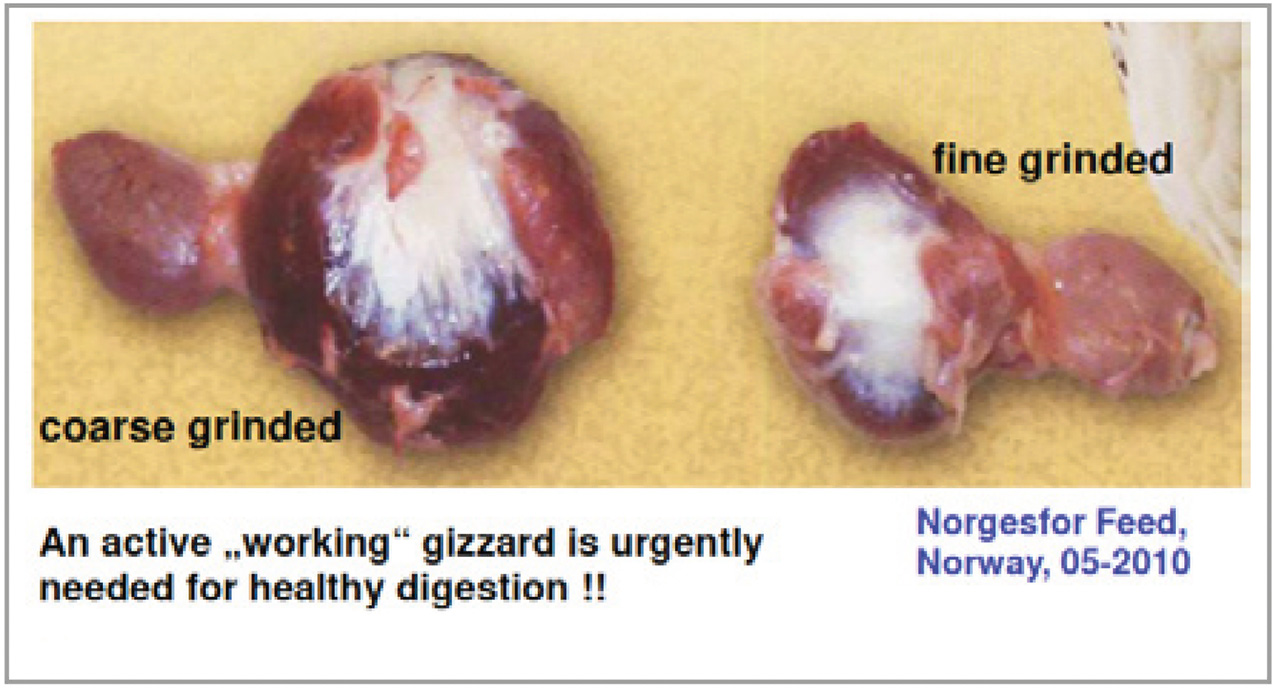
Adapted by R. Pottgüter, LOHMANN TIERZUCHT GmbH
Our general recommendations are very BASIC – but, please listen to these basics – they are crucial!
Always keep floor/litter material dry. Birds exhibit their natural behaviour on the floor (not in the system, apart from eating, drinking and sleeping). They search and scratch and clean their feathers. We recommend keeping a distance of at least 2 m between aviary systems, so the birds are forced to use the floor instead of jumping or flying from system to system.
You might prefer to place more aviary systems in your house so more birds can be kept, but please be aware that this will decrease the chance of optimal results. Birds are supposed to sleep in the system and use the floor for activity. Keep your floor/litter dry AT ALL TIMES!
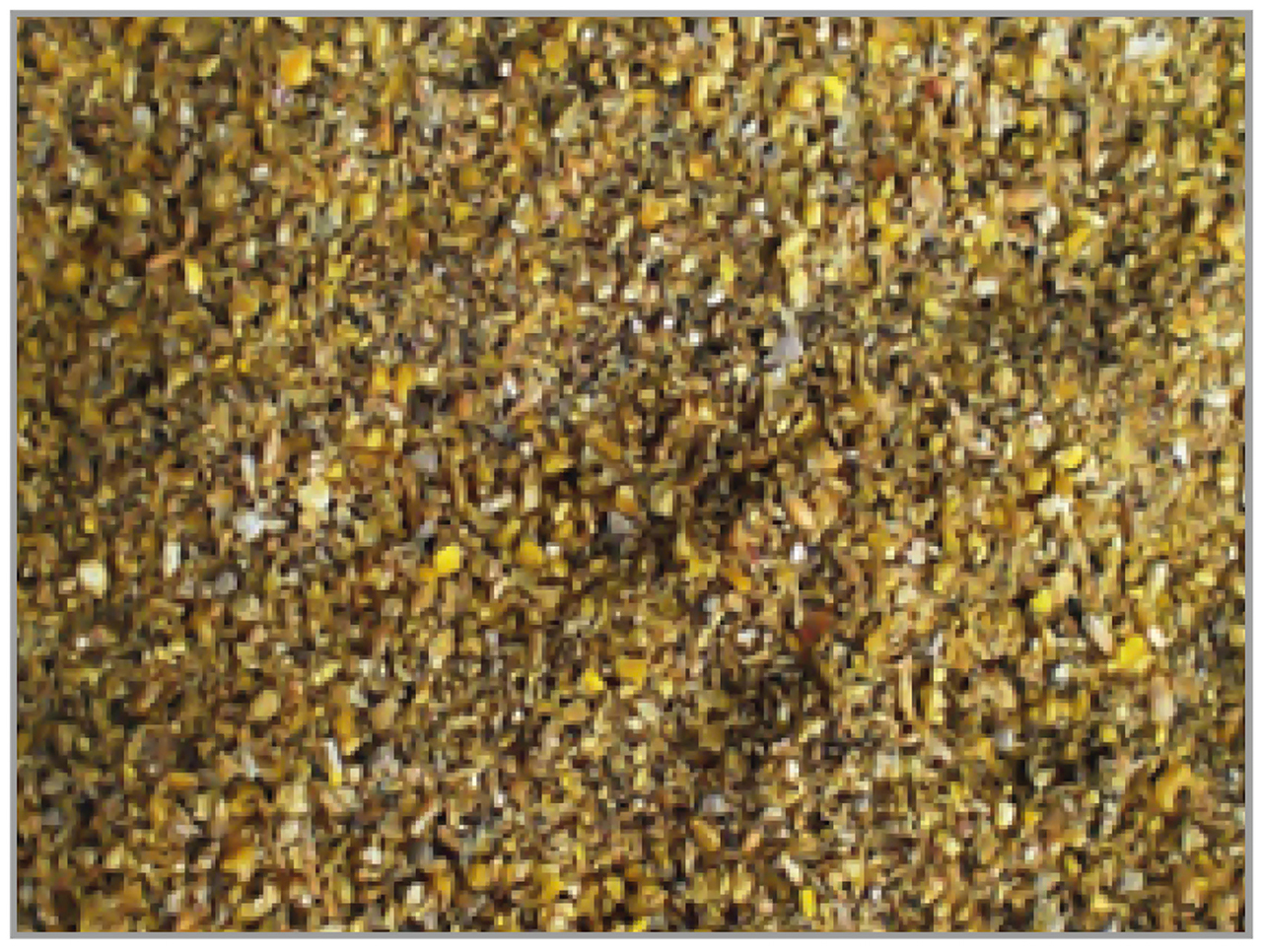
Source: R. Pottgüter, LOHMANN TIERZUCHT GmbH
The most fundamental piece of advice: use COARSE feed. Do NOT grind the raw material into fine particles or dust: for several reasons. Coarse feed slows down the speed of passage through the digestive tract, gizzard and intestines. It provides birds with a feeling of being sated and helps to continuously develop the gizzard and intestines.
Numerous trials have proven the positive effects of a large, well developed gizzard and how the enzymes work in this. Coarse feed often also produces drier manure. If the manure is too wet, the hens are often more dirty. Dirty hens frequently have poorer feather cover or are more likely to be pecked by other birds. Wet manure is also a sign of sub-optimal functioning intestines – digestion is not optimal and insufficient nutrients are absorbed.
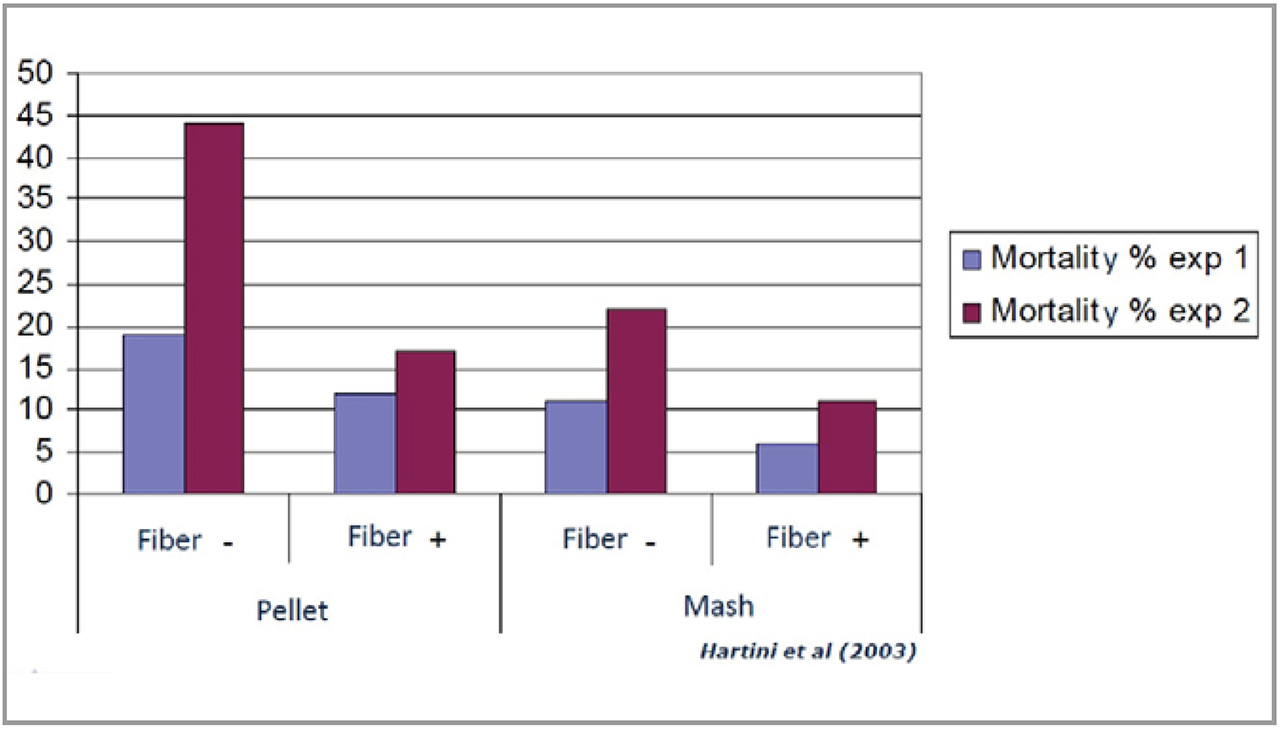
If the intestines are not functioning optimally, hens will often start to eat feathers – a typical sign – before they start to peck each other. What can we learn from this? Always keep the intestines in optimal condition (think about yourself – how do you feel when your manure is wet and your stomach is not working optimally?)

Adapted by R. Pottgüter, LOHMANN TIERZUCHT GmbH
We also balance amino acids in our feed, according to the guide provided by the genetic company. The amino acids are balanced according to the feed intake.
A great tool to maintain a good intestinal balance is oats – COARSELY ground oats!! We have learned this from Sweden and Finland, but also from our own results. We find that our birds are kept calm by being given 10- 15% of coarse oats (including the oat hulls). We always have a lot of feathers on the floor and the birds maintain good feather coverage. Trials have been performed that demonstrate how oats can reduce the number of feathers found in the birds (gizzard).
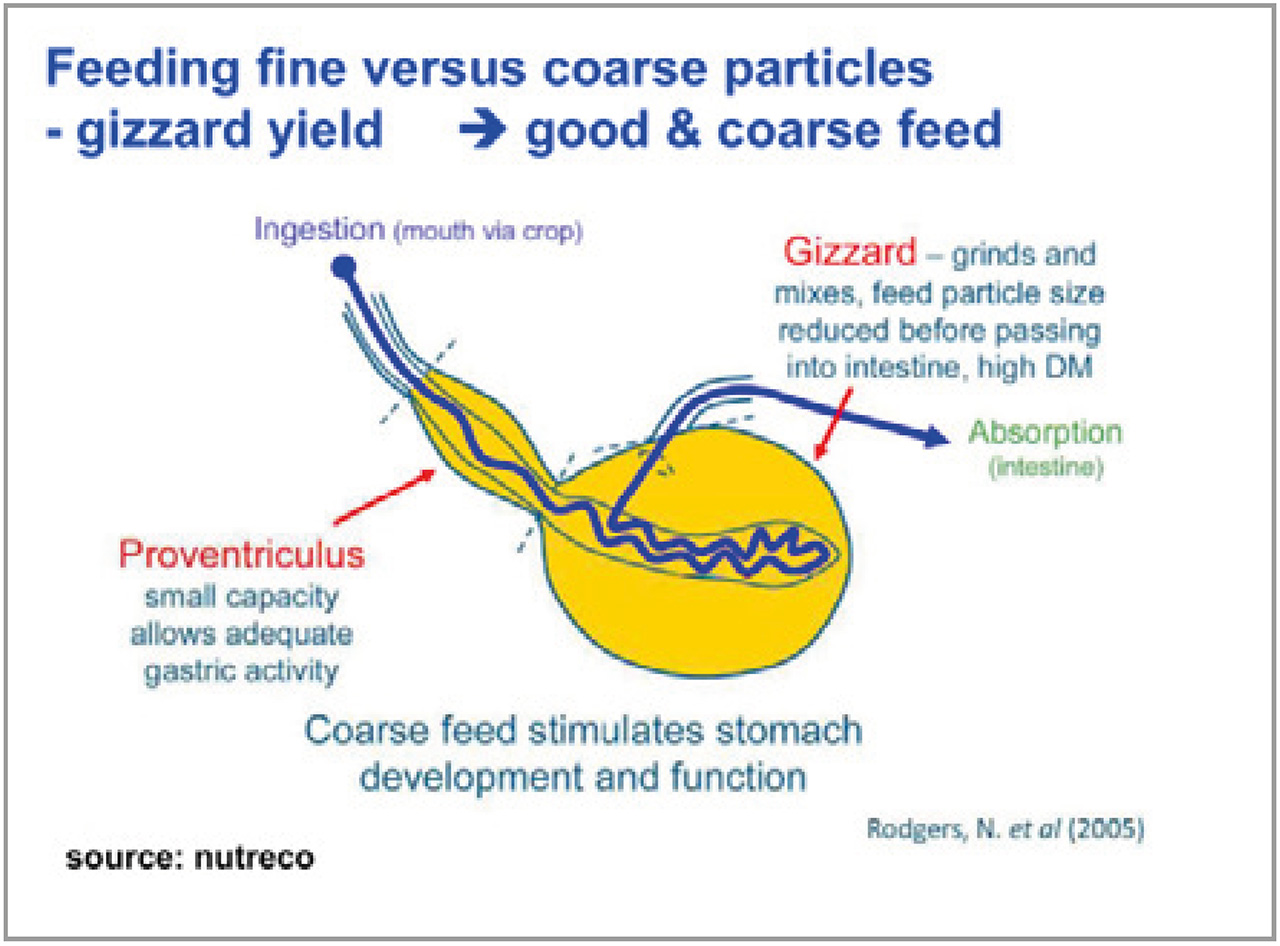
Adapted by R. Pottgüter, LOHMANN TIERZUCHT GmbH
Oats are very rich in fibre and magnesium. Magnesium also contributes to providing calcium and is beneficial to relax the muscles and reduce tension. Similar to during rearing, using a good light plan as a preventive measure is important. Do not apply too high light intensity at the beginning. From week 25 when floor eggs have stabilised below 1%, we normally reduce the light intensity as a precautionary measure. We recommend a warm white light of 2700 kelvin.
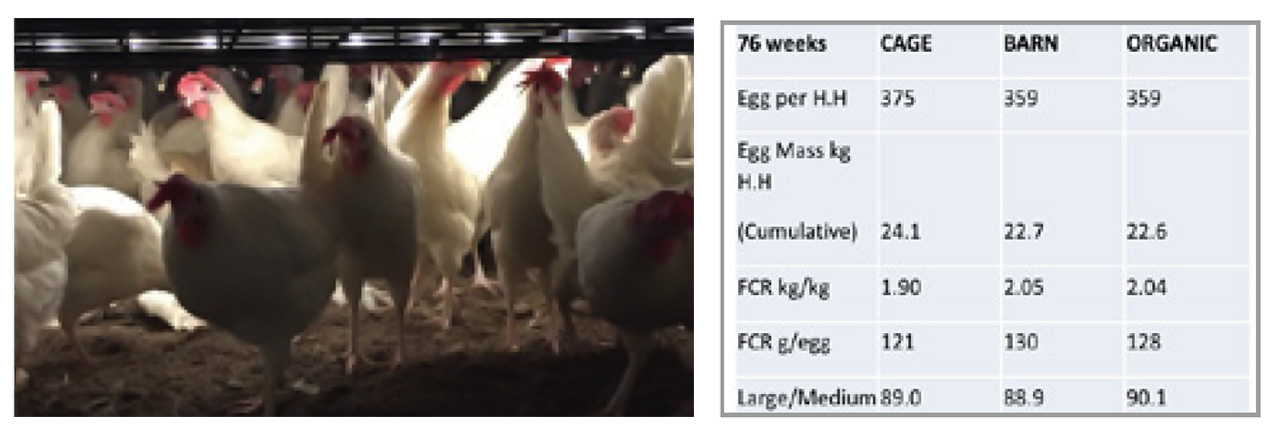
Source: DLG | LOHMANN Denmark ApS
During production we also recommend providing lucerne, gizzard stones, pick stones, etc. Organic egg producers are obliged to supply roughage. They typically supply roughage comprising maize/corn/peas/lupine or a mix, generally at a dose rate of 10-15 g/bird/day. Another basic: COARSE CALCIUM. Please don’t neglect this!! Try to find a way of supplying coarse limestone at the right time of the day (when it is needed).
A few Danish egg producers only have 2% calcium in their feed. During the afternoon (last 8-10 hours of the day), they add +6% of coarse limestone (approx. +2% calcium) to the feed. Trials run by a nutrition company visualised the birds’ behaviour and when they specifically need calcium. The results show that a bird primarily eats calcium eight hours after waking up.
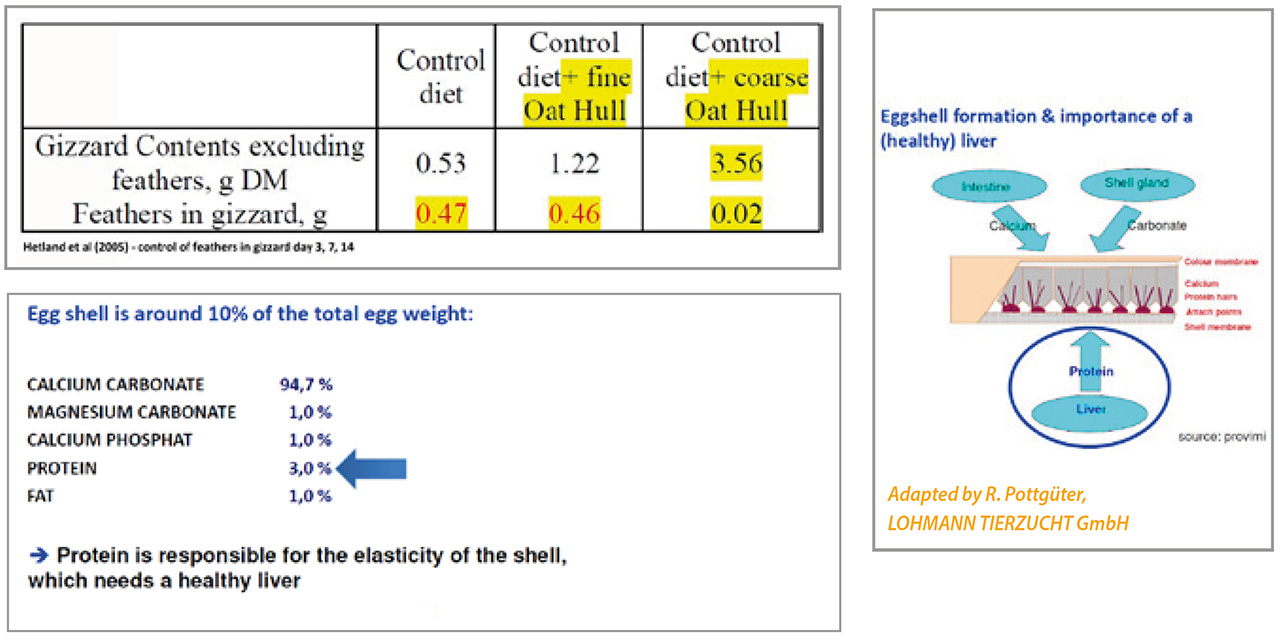
Source: R. Pottgüter, LOHMANN TIERZUCHT GMBH | Adapted by R. Pottgüter, LOHMANN TIERZUCHT GmbH
In Denmark, we often perform an autopsy at approx. 13.00 hrs in the afternoon. At this stage the egg for the next day is ready, but still has a very soft shell. When we move our fingers over the egg surface we can feel that the shell is starting to be formed on the outside – this supports the trials and the understanding of the birds’ behaviour.
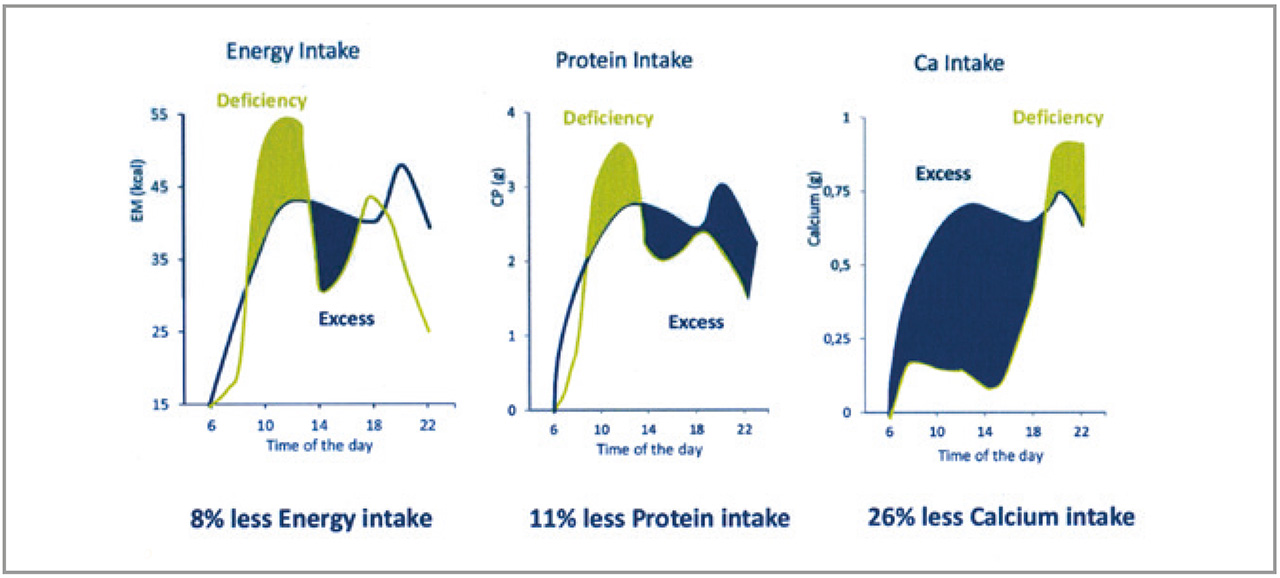
Source: nutreco
Our focus is also shell stability/elasticity during the entire production period. Elasticity comes from protein and protein comes from the liver. In other words, we always need a healthy liver. We continuously observe the number of worms (worm eggs in manure) and also when we perform an autopsy.
We have observed that worms cause our birds a lot of stress – so worms are a critical factor!! Due to this the birds are given regular worm treatments.
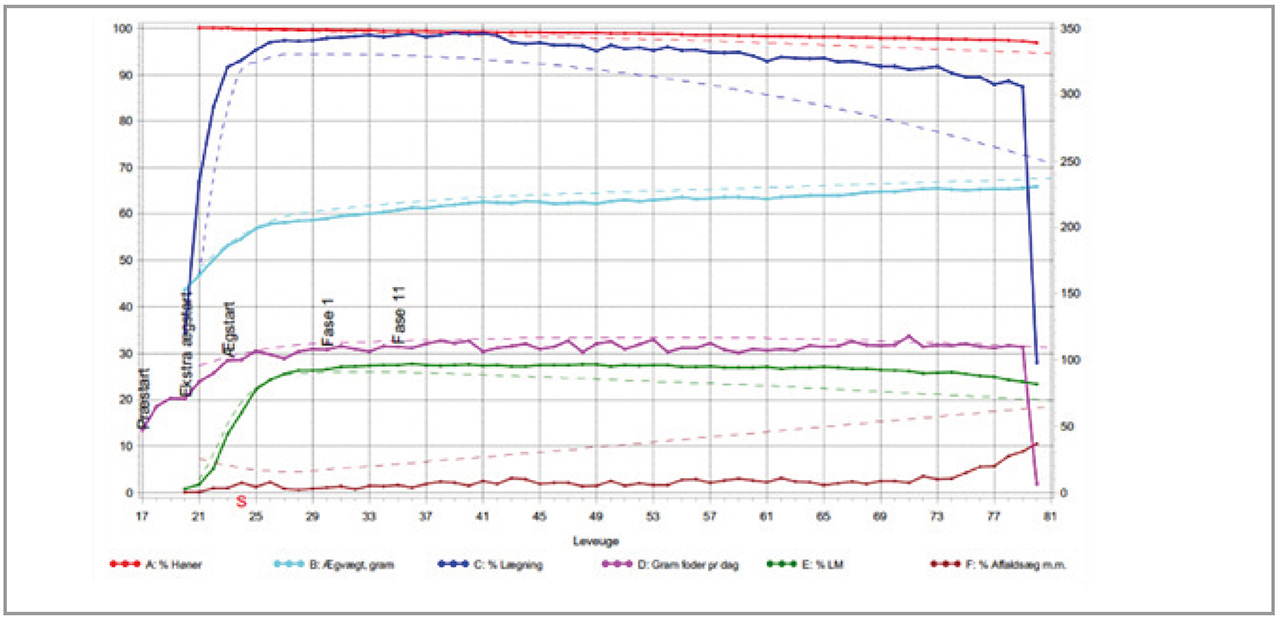
Source: Efficient Control, Denmark – example
Christian Nielsen







